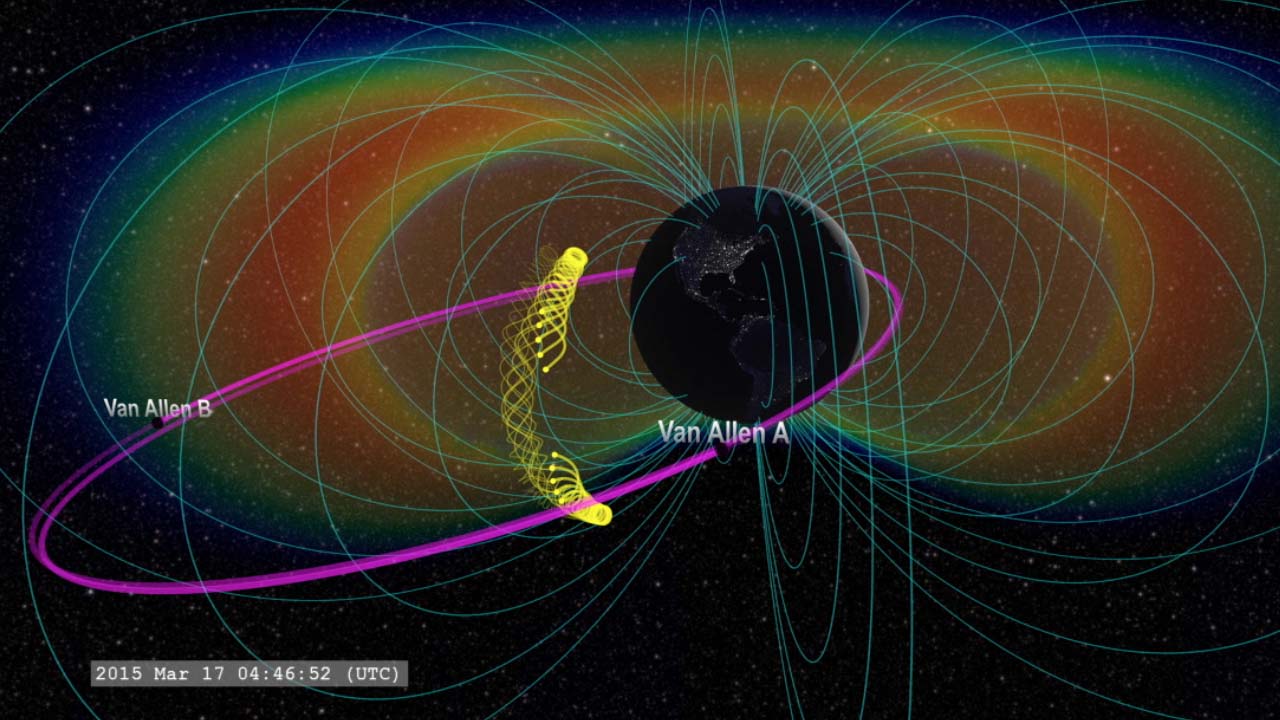Supercharging the Radiation Belts
On March 17, 2015, an interplanetary shock – a shockwave created by the driving force of a coronal mass ejection, or CME, from the sun – struck the outermost radiation belt, triggering the greatest geomagnetic storm of the preceding decade. And NASA's Van Allen Probes were there to watch it.
One of the most common forms of space weather, a geomagnetic storm describes any event in which Earth’s magnetic environment – called the magnetosphere – is suddenly, temporarily disturbed. Such an event can also lead to change in the radiation belts surrounding Earth, but researchers have seldom been able to observe what happens within the first few minutes immediately following a shock.
But on the day of the March 2015 geomagnetic storm, one of the Van Allen Probes was located at just the right spot within the radiation belts, providing unprecedentedly high-resolution data from a rarely witnessed phenomenon. A paper on these observations was published in the Journal of Geophysical Research on Aug. 15, 2016.
Music: Light Hearted Angst by Dewey Dellay

Artist concept of the Van Allen Probes. Image credit: APL

Van Allen Probes image shows three radiation belts around Earth in 2012.

GIF of accelerated electrons circulating in the Van Allen Radiation Belts.
Credits
Please give credit for this item to:
NASA's Goddard Space Flight Center
-
Producer
- Genna Duberstein (USRA)
-
Visualizer
- Tom Bridgman (Global Science and Technology, Inc.)
-
Scientist
- Shrikanth G. Kanekal (NASA/GSFC)
-
Science writer
- Kathalina Tran (Wyle Information Systems)
Release date
This page was originally published on Monday, August 15, 2016.
This page was last updated on Wednesday, May 3, 2023 at 1:48 PM EDT.


